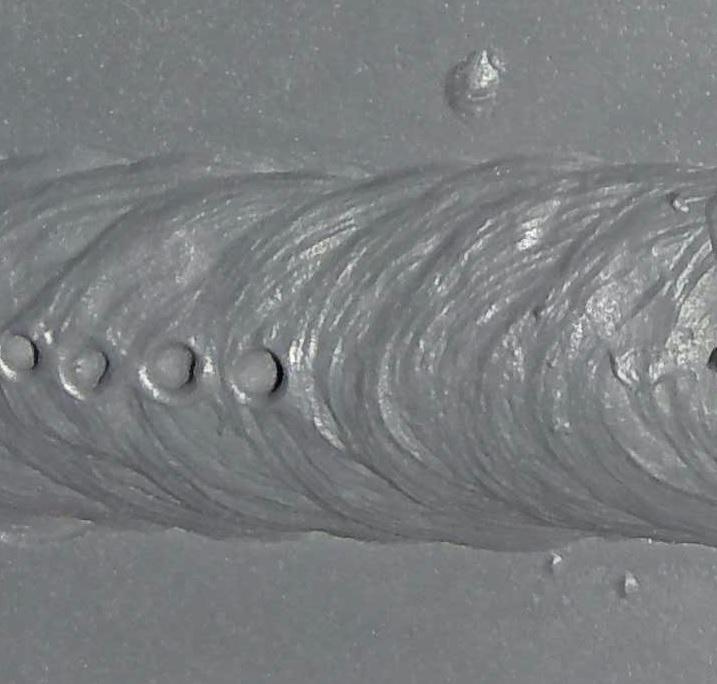What is Porosity in Welding: Trick Aspects and Their Impact on Weld High Quality
What is Porosity in Welding: Trick Aspects and Their Impact on Weld High Quality
Blog Article
Understanding Porosity in Welding: Exploring Causes, Effects, and Prevention Strategies
As professionals in the welding sector are well mindful, understanding the causes, impacts, and prevention methods related to porosity is important for achieving durable and reputable welds. By diving right into the root triggers of porosity, analyzing its detrimental results on weld top quality, and exploring effective prevention strategies, welders can improve their understanding and abilities to create top notch welds continually.
Usual Sources Of Porosity
Porosity in welding is mostly triggered by a mix of aspects such as contamination, improper protecting, and insufficient gas insurance coverage during the welding procedure. Contamination, in the type of dirt, grease, or corrosion on the welding surface area, develops gas pockets when warmed, causing porosity in the weld. Incorrect securing happens when the securing gas, commonly made use of in procedures like MIG and TIG welding, is incapable to fully secure the molten weld pool from reacting with the surrounding air, leading to gas entrapment and succeeding porosity. In addition, inadequate gas insurance coverage, usually due to inaccurate flow rates or nozzle positioning, can leave components of the weld unsafe, permitting porosity to form. These variables jointly add to the development of spaces within the weld, damaging its stability and potentially triggering architectural issues. Comprehending and addressing these common causes are critical actions in avoiding porosity and making certain the high quality and stamina of bonded joints.
Impacts on Weld High Quality
The existence of porosity in a weld can dramatically endanger the general top quality and stability of the welded joint. Porosity within a weld produces gaps or tooth cavities that weaken the framework, making it extra at risk to cracking, corrosion, and mechanical failure. These spaces act as stress concentrators, minimizing the load-bearing capability of the weld and boosting the chance of premature failing under applied tension. On top of that, porosity can likewise offer as possible websites for hydrogen entrapment, more exacerbating the degradation of the weld's mechanical properties.
Additionally, porosity can hinder the performance of non-destructive screening (NDT) methods, making it challenging to find other issues or discontinuities within the weld. This can lead to considerable security problems, specifically in essential applications where the architectural honesty of the bonded components is he said paramount.

Avoidance Techniques Introduction
Given the damaging effect of porosity on weld high quality, reliable prevention methods are essential to maintaining the structural honesty of welded joints. Additionally, selecting the appropriate welding specifications, such as voltage, present, and take a trip speed, can aid lessen the risk of porosity development. By integrating these prevention methods into welding techniques, the occurrence of porosity can be significantly reduced, leading to stronger and much more reputable bonded joints.
Importance of Correct Shielding
Proper securing in welding plays an essential duty in stopping climatic contamination and making sure the integrity of welded joints. Securing gases, such as argon, helium, or a mix of both, are commonly utilized to safeguard the weld pool from responding with elements airborne like oxygen and nitrogen. When these reactive aspects enter into call with the hot weld swimming pool, they can trigger porosity, leading to weak welds with click for more lowered mechanical residential or commercial properties.

Inadequate protecting can cause numerous problems like porosity, spatter, and oxidation, endangering the architectural honesty of the bonded joint. Adhering to proper securing techniques is important to produce premium welds with marginal defects and make certain the durability and reliability of the welded elements.
Monitoring and Control Methods
Exactly how can welders effectively keep track of and control the welding process to web link guarantee optimum outcomes and prevent issues like porosity? By constantly checking these variables, welders can recognize deviations from the excellent problems and make immediate changes to stop porosity development.

Furthermore, carrying out appropriate training programs for welders is essential for checking and managing the welding process properly. What is Porosity. Informing welders on the value of maintaining regular criteria, such as proper gas protecting and take a trip speed, can assist stop porosity problems. Normal evaluations and qualifications can additionally make sure that welders excel in monitoring and controlling welding procedures
Additionally, making use of automated welding systems can improve monitoring and control abilities. These systems can precisely manage welding specifications, decreasing the probability of human mistake and making certain consistent weld high quality. By integrating sophisticated surveillance innovations, training programs, and automated systems, welders can successfully keep an eye on and control the welding procedure to reduce porosity defects and accomplish high-quality welds.
Final Thought

Report this page